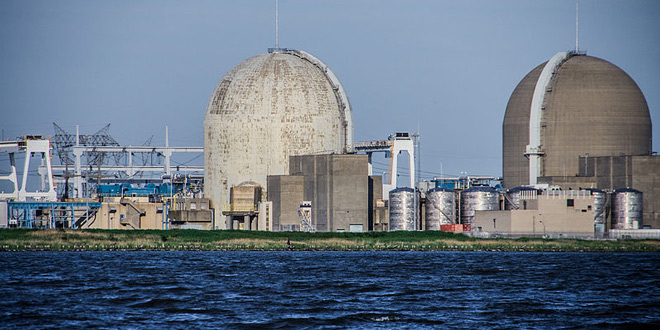By Rory D. Sweeney
PJM’s Board of Managers on Thursday ordered a resumption of the Artificial Island transmission upgrades but directed the development of alternative cost allocations to address Delmarva peninsula stakeholders who argue they’re unfairly on the hook for the vast majority of the $280 million project.
The board suspended work on the controversial project last August following years of stakeholder complaints about how the project was scoped, awarded and had its costs allocated, ordering staff to perform a comprehensive analysis. At a special session of the Transmission Expansion Advisory Committee in March, staff announced some modifications to the scope of the project, but remained supportive of the proposal the board had approved in 2015. (See PJM Sticks with LS Power on Artificial Island Project.)
Last April, FERC approved the cost allocation for the project, but in June it said it would consider rehearing requests over whether PJM’s use of the solution-based distribution factor (DFAX) cost allocation method is appropriate (EL15-95, ER15-2563). Under the DFAX method, 93% of the costs would be borne by Delmarva Power & Light ratepayers, with all other transmission zones paying less than 1% each.
PJM’s signal last month that it would move forward with the project prompted renewed complaints to the board from 12 stakeholders — including the governors of Maryland and Delaware — upset over the cost allocation.
In a letter to stakeholders on Thursday, PJM CEO Andy Ott acknowledged the dispute and called on PJM’s transmission owners to come up with a compromise.
“PJM has stated in past Federal Energy Regulatory Commission proceedings and at a Jan. 12, 2016, FERC technical conference that a solution-based power flow formula (the ‘DFAX methodology’) works fairly and reasonably to identify project beneficiaries for cost allocation purposes in the overwhelming majority of lower-voltage transmission projects considered by the board,” Ott wrote. “But we also noted that application of the DFAX methodology can result in cost allocations that seem anomalous in cases where the engineering rationale or need for the particular project is not one driven by power flows. Indeed, PJM has suggested that the Artificial Island project is unique in nature and that application of the DFAX methodology to a stability or short-circuit problem may not yield clear beneficiaries.”
TOs, not PJM, Responsible for Cost Allocation
Ott said the Federal Power Act makes the PJM TOs responsible for proposing cost allocation methods and prevents the RTO from imposing alternatives. But he also acknowledged that the cost allocation dispute “is so polarized [that] it threatens to impede PJM in discharging its reliability responsibilities.”
As a result, he said, PJM staff “will analyze project beneficiaries from alternate perspectives, including identifying load and the extent of service interruption that could be expected in the case of an uncontrolled stability event at Artificial Island.”
“Importantly, we anticipate this information will still demonstrate the logic supporting an allocation of project costs to beneficiaries located in the Delmarva region, along with beneficiaries in one or more neighboring states,” he added.
He said the analyses will be available “shortly” and will be referenced in its FERC filing on the project.
The board also used in its decision a whitepaper produced by PJM, which stakeholders have complained was not made available for comment and response prior to the board’s decision. Ott said in his letter that the “whitepaper is anticipated for public release in the near future and will offer additional transparency to stakeholders.”
In a news release, the board said it directed staff to publish the alternative allocations because it believes “this data could offer insight to, and a basis for, those states, transmission owners and customers that derive benefit from this project to devise a different cost allocation proposal for stability projects such as Artificial Island.”
At the special TEAC meeting last month, PJM officials said their review confirmed that LS Power’s proposal for a 230-kV line from Artificial Island to a new Silver Run substation in Delaware was the best solution but that the interconnection point should be changed from the Salem nuclear plant to the Hope Creek plant. The analysis also eliminated as unnecessary a static VAR compensator and optical groundwire upgrades.
The revised project assigned $146 million of the project work to LS Power, $132 million to Public Service Electric and Gas, and $2 million to Delmarva Power & Light.





